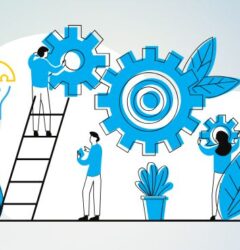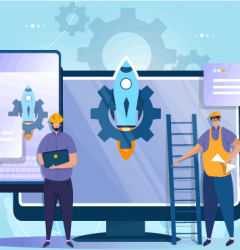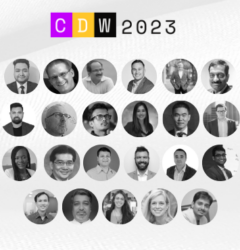
This article was first published on Customer Think.
Businesses are going all guns blazing to digitize their processes, but the IT talent shortage is derailing the digital transformation efforts of many. However, no-code platforms simplify development by enabling non-programmers to build applications without knowing how to access APIs or deploy web or mobile apps.
The global low-code platform market is forecasted to generate a revenue of $187.0 billion by 2030, increasing from $10.3 billion in 2019, and is expected to reach 31.1% CAGR in the forecast period (2020-2030). By embracing these no-code solutions, IT project leads, business process stakeholders, and project managers can serve IT and businesses’ various and frequently siloed interests.
But how can no-code development be instilled into project teams?
By understanding the nitty-gritty of citizen development.
To initiate a citizen development programme, you must identify and train non-technical business users who want to build applications without dependence on IT teams.
Here are some interesting numbers on citizen developers by Gartner. By 2024 80% of all technological items will be built by citizen developers, up from 25% in 2014. The growing presence of a post-pandemic distributed, remote workforce has forced businesses to adopt agile frameworks emphasising speed and shorter development cycles. This and the IT talent shortage have allowed the non-technical workforce to participate more inclusively in digital transformation.
Looking at citizen development from the lens of agility
Central IT solutions can’t address the unmet needs of today’s organizations. With no-code tools, citizen developers can build priority-specific solutions 10X faster than traditional development. They deal with problems as they emerge, developing applications that miss the radar of IT amid many projects. This gives programmers and architects a lot of bandwidth to concentrate on complex solutions that add significant value to the company. It translates to increased productivity (98 percent less time spent creating operational dashboards) and better business outcomes.
Adopting a no-code requires a mindset that encourages user empowerment. To empower customers, you need a new software development life cycle that is adaptable and follows agile principles. You also need a framework to help citizen developers create applications quickly and receive quick feedback from stakeholders.
Also Read: Well begun is half done: Take these steps to kick-start Citizen Development Project
How can you ensure agility with citizen development?
It’s one thing to comprehend citizen development; it’s another to understand how to scale it. Your organization must accomplish the following to implement and scale citizen development successfully:
- Create a governance framework.
- Rethink how you work with IT departments and business users.
- Reskill and upskill your staff to provide future-ready skills such as digital literacy and citizen development.
Without the aforementioned concerns, citizen development applications may do more harm than good, resulting in additional effort or confusion rather than fixing an issue. Your citizen development practitioners will require tools to design and create their apps in the context of the business and the organization as a whole.
Also Read: Power of AI for everyone with ‘No-Code AI’
Understanding the governance structure for citizen development
Although business users can readily use no-code platforms to rapidly build exclusive, priority-specific applications, their roles and duties must be clearly defined to avoid the shadow IT dilemma. This can be achieved by ensuring one of the following governance models
a) Top-down governance model
Your IT governance model might be top-down, with a single authority controlling your entire citizen development program, which could comprise a variety of projects and activities. This office, which can be housed within your IT department, can be led by your CTO.
The office can create no-code development best practices and spread them throughout the company, ensuring that all teams (technical and non-technical) are on the same page. Other responsibilities could include the following:
- Choosing the most appropriate no-code platform for the entire company
- Maintaining the citizen development policy and criteria.
- Bringing resources together and distributing them.
- Organizing workshops for citizen developers, hackathons, and community events.
- High-value no-code projects are identified and prioritized. For example, creating no-code applications to automate essential procedures amid time pressure.
- Creating and distributing a list of essential data services and APIs.
- Several no-code initiatives were updated for internal and external stakeholders.
b) Center of Excellence
You can use the Center of Excellence (CoE) concept to manage your citizen development program while adhering to agile principles. In your CoE team, you can have application specialists, project managers, solution architects, and UX designers.
c) Platform governance model
In this model, you can give a tactical team the platform-level responsibilities of managing roles, rights, and permissions. The citizen developers can be given more skin in the game without compromising privacy and security standards.
Your policies and processes must be well-defined, clear, and concise. Poor governance, according to Forrester, jeopardizes coherence and security, while excessive control stifles operational agility. As a result, always leave opportunities for improvements and revisions.
Also Read: The Top No-Code Podcasts for Citizen Developers
Criteria for a good citizen development candidate
Ideally, a candidate for citizen development should have rich experience with manual processes and an awareness of the accompanying pain points. Although no prior coding skills are required to use no-code platforms, the ideal applicant must have a stronghold on business logic.
You need to realize that citizen development can’t be successful with independent contributors and require collaborative, cross-functional efforts that are properly governed. Therefore, an ideal candidate should have a collaborative mindset.
You also must realize that citizen developers are business users first, and no-code development is not their only KRA. Therefore, they must take up different roles and responsibilities occasionally. As a result, time management is another quality of an effective citizen developer.
Conclusion
The rise of citizen developers is proportional to the democratization of software development, which facilitates agile application development. Yes, shadow IT is a prominent challenge of such democratization, but with a defined set of governance principles, duties, and obligations, you can turn citizen development into a great success. As more firms adopt a hybrid workforce model, focusing non-technical professionals on citizen development is vital rather than entrusting day-to-day troubleshooting to remote-based IT personnel. No-code platforms democratize and speed up innovation by allowing business analysts, product designers, and marketers to work as citizen engineers.
Login
Please login to comment
0 Comments
Oldest















